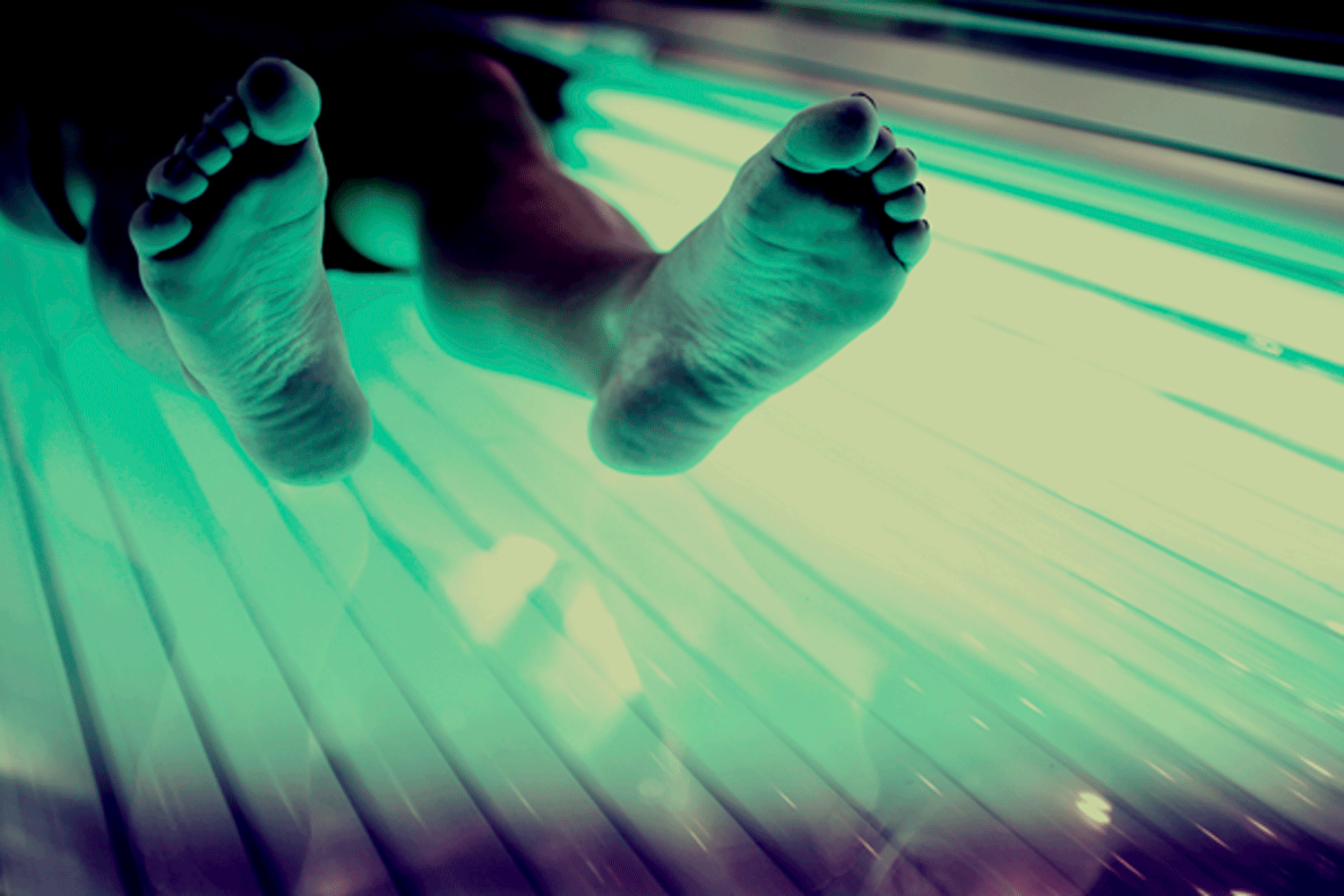Heart beating steadily, muscles relaxed, she lays under the soft blue lighting of the tanning bed. The silent, sweet serene atmosphere of the enclosed space fills her up with warmth and reassurance.
Senior Bailey North represents the 29 percent of high school girls who have used indoor tanning devices, according to the Center for Disease Control. North, who has admittedly been tanning since she was 15, started using tanning beds out of necessity.
North did competitive cheer growing up and had to maintain a tan during the season. She was also partial to indoor tanning because she felt spray tans would make her look orange.
A previous law in Texas stated a minor had to be at least 16.5 years old and have parental consent in order to use an indoor tanning device. The new, current law, Senate Bill 329, went into effect on Sept.1, 2013 and now prohibits any minor under the age of 18 from using an indoor tanning device, regardless of parental consent. North turned 18 on Oct. 9 and tans every day whenever she gets a chance.
“I want to be tan for winter and stuff,” North said. “And the more often you tan, the tanner you get. In the bed it’s all warm and cozy and it makes me feel good about myself because I feel like the tanner you are, the better your appearance is so it makes me feel good.”
The American Academy of Dermatology found almost 70 percent of tanning salon visitors consist of white females and young women, and that melanoma rates continue to increase faster in women aged 15-29 years old than in men of the same age group. The study also reports that those who have used an indoor tanning device and been exposed to UV radiation develop a 59 percent increase in the risk of getting melanoma, and that the risk increases with each use.
Teacher Jeri Bordelon remembers the days of tanning when she was young, and how often her and her friends would lay outside and tan the days away. Bordelon says nobody shared much concern back then over the repercussions of tanning.
“If the sun was shining we would all slather on baby oil and go lay outside and just try to fry ourselves,” Ms. Bordelon said. “Sometimes I would even make those little foil things. I guess I really didn’t do it during winter. I would say probably between February and November I did it.”
Legacy nurse, Elisa Watkins, is outspoken about to the dangers of indoor tanning. She is eager to educate anyone on the facts and statistics of indoor tanning devices, including the different types of cancers and affliction, and likelihoods of contracting them.
“Tanning is bad for any age group,” Watkins said. “It doesn’t matter if you’re a teen or older, tanning is not a good plan, just because it has so many side effects. You can get a sunburn, premature aging, you can get skin cancer. I mean there’s just a lot of bad side effects to tanning.”
Watkins also noted why she thinks teens, especially young women, seem to be tanning more these days.
“I’m sure it’s a social thing,” Watkins said. “Like your skin has that ‘healthy glow’ to it, or like tanning makes you prettier, or it makes you look skinnier, you know any of that kind of stuff. I’m sure it has a lot to do with social pressure.”
While a tanning bed produces about the same amount of UVB light as the sun does, it also produces around three times the amount of UVA light. An indoor tanning bed gives off concentrated amounts of UV rays which means it causes faster mutations in the body because UV light changes the configuration of DNA. While tanning of any form is dangerous, indoor tanning is objectively worse.
All hope is not lost, however. There are still safe ways to obtain that sought-after sun-kissed glow, without the negative and long-lasting consequences.
“Spray tanning is pretty healthy for you,” Watkins said. “No cancers that I am aware of have been linked to it, and definitely no retinal sunburn or anything that can damage your eyes permanently. The only safe tanning is spray tanning.”
Picture by Valerie Yermal Creative Commons used with permission




